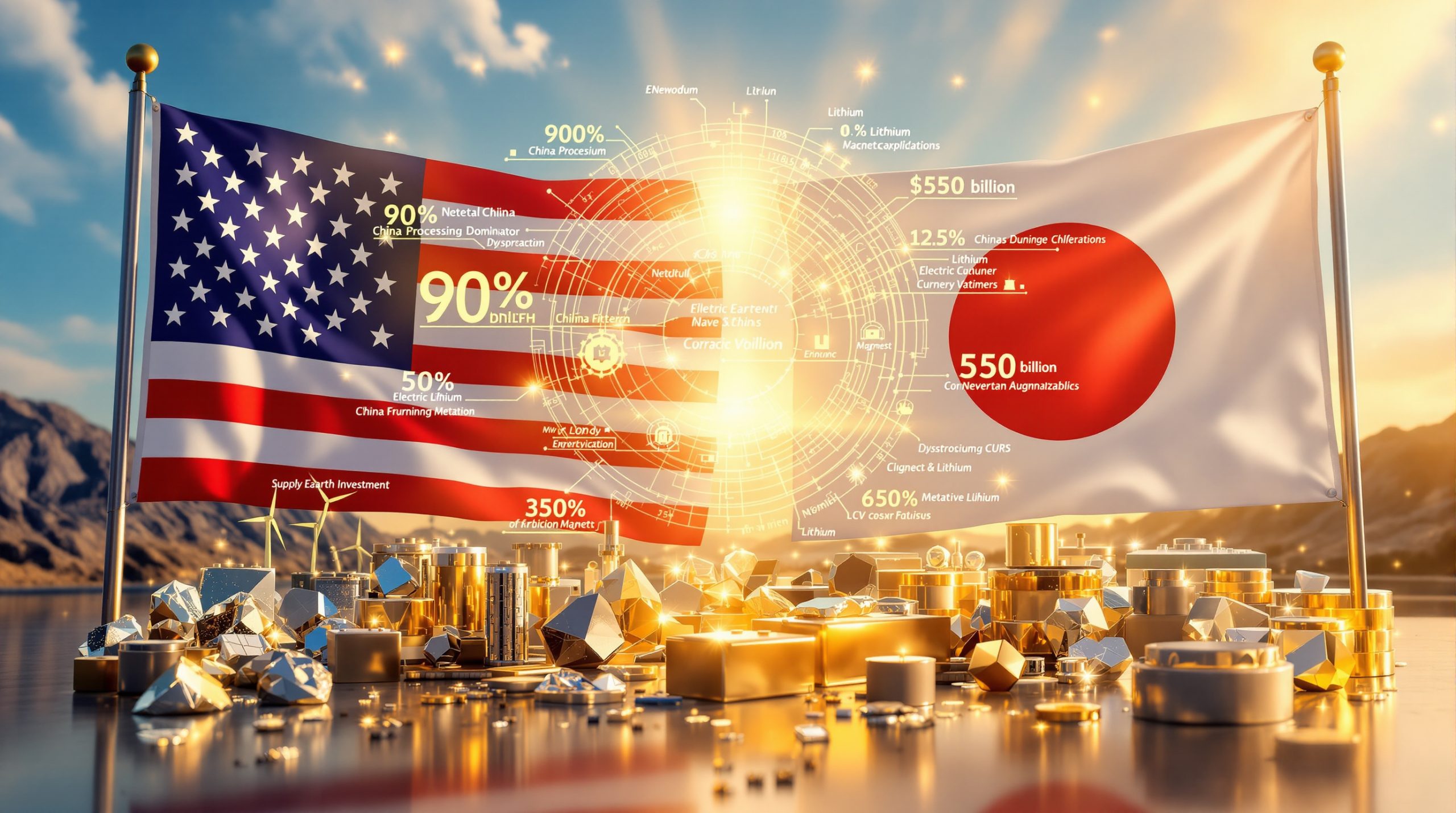What Led to Trump's Tariff Pause?
The Abrupt Policy Reversal
In a surprising turn of events, President Trump announced a 90-day pause on his sweeping tariff plans just one week after their initial announcement. This dramatic reversal came after Treasury Secretary Scott Bessant and Commerce Secretary Lutnik presented compelling market concerns to the President regarding the potential economic fallout of the aggressive tariff strategy.
The presentation evidently resonated with Trump, who subsequently lowered the reciprocal tariff rate to 10% for all countries except China. While the President publicly framed this shift as a "negotiating strategy," insiders suggest the decision was primarily driven by alarming market dynamics insights that threatened economic stability.
"The administration couldn't ignore the unprecedented market reaction," noted financial analyst Morgan Stanley's chief economist in a recent report. "The bond market's response sent warning signals that even the most ardent tariff supporters couldn't dismiss."
Dangerous Bond Market Patterns That Triggered Concern
What particularly alarmed economic advisors was an unusual and dangerous pattern emerging in financial markets: bond yields were rising even as stock prices fell. This counterintuitive movement signals severe loss of investor confidence and represents a significant deviation from normal market behavior.
Typically, falling stocks push investors toward safer treasury bonds, lowering yields. The opposite pattern indicated that investors feared both inflation from tariffs and growing government debt simultaneously – a rare and troubling scenario that financial veterans recognized as a potential precursor to broader market instability.
This created what economists describe as a "triple threat" to the economy: higher consumer goods prices from tariffs, increased mortgage and credit card rates from rising bond yields, and higher business borrowing costs hampering growth. The 10-year Treasury yield jumped nearly 15 basis points in just two trading sessions following the initial tariff announcement, while the S&P 500 dropped over 2.5%.
"When bonds and equities decline simultaneously, it suggests investors see no safe havens – a truly concerning development that often precedes significant market corrections," explained Dr. Kenneth Rogoff, former IMF chief economist.
How Did Gold Markets React to the Tariff Pause?
Gold's Dramatic Recovery
Gold markets exhibited extraordinary volatility throughout the tariff announcement saga. Following Trump's pause announcement, gold recaptured over $100 per ounce in a single trading session – marking the largest one-day dollar gain since March 2023. The precious metal posted an immediate 3.39% Tuesday rally after the tariff pause in response to market pressures was communicated to markets.
This dramatic recovery underscored gold's unique status as both a safe-haven asset during uncertainty and a beneficiary when trade tensions ease. The metal's sensitivity to geopolitical developments was on full display, with trading volumes reaching 150% above average during the recovery session.
"We've rarely seen such a pronounced V-shaped recovery in gold prices," noted veteran precious metals trader Michael Widmer of Bank of America. "The speed of the reversal reflects just how closely traders are monitoring every development in the tariff situation."
First Quarter Gold Performance
Prior to the tariff drama, gold had been experiencing significant momentum. The World Gold Council reported that Q1 ETF inflows reached an impressive 226.5 metric tons – representing the largest quarterly increase in gold ETF inflows in three years.
This strong institutional investor interest reflected growing concerns about inflation, geopolitical tensions, and central bank policies. However, the initial tariff announcement temporarily derailed this positive trend, causing gold to plummet $192 between April 3-8 before staging its remarkable comeback.
Gold's resilience during this period can be attributed to several factors beyond the tariff pause. Central banks continue their multi-year buying spree, with China, Turkey, and India adding substantial reserves. Additionally, the growing recognition of gold's role in diversifying against AI-related tech concentrations has created new gold investment strategies not present in previous market cycles.
What's Happening with Copper Markets?
Copper's Bear Market Status
Copper prices have experienced severe downward pressure, plunging 20% from late March and meeting the technical definition of a bear market. This dramatic decline reflects investors selling amid tariff-fueled concerns over a potential global trade war and its implications for industrial demand.
BNP Paribas had accurately predicted this collapse, noting that a "preparation rush" to secure copper ahead of tariff implementation had artificially inflated prices before the inevitable correction. The bank's commodity analysts warned that structural demand issues in China – responsible for over 50% of global copper consumption – would compound tariff effects.
Freeport-McMoRan CEO Kathleen Quark didn't mince words about the potential impact: "We cannot ignore the fact that a trade war could cause people to not invest, not buy, and change their patterns and affect demand." With major construction and infrastructure projects already facing delays worldwide, copper's demand outlook remains clouded.
Potential Long-Term Benefits for Mining
Despite the near-term pressure, speculation is growing that current trade policies might paradoxically benefit the mining stocks guide sector over the longer term. Industry analysts point to increased domestic production incentives and potentially reduced regulatory burdens as offsetting factors.
The Biden administration had already designated copper as a critical mineral, and trade tensions could accelerate permitting reforms for domestic projects. American copper mines currently operate at just 77% of capacity, leaving significant room for production increases without new development.
Additionally, growing demand from AI technology might strengthen copper's fundamental position regardless of trade policies. Data centers require approximately 10-15 tons of copper per megawatt of capacity, and the explosive growth in AI infrastructure is projected to require over 200,000 additional tons of copper annually by 2027.
Which Mining Companies Are Making Strategic Moves?
Dryen Gold's Significant Discovery
Amid the market turbulence, Dryen Gold announced a new zone with substantial visible gold at its Allora project, representing the most significant gold discovery in the company's exploration history. The mineralization occurs in a hanging wall structure approximately 80 meters from the main Allora target zone, suggesting the potential for multiple parallel ore bodies.
Initial core samples revealed high-grade intercepts exceeding 15 g/t gold across multiple sections, though assay results are still pending. Dryen's technical team noted that the mineralization pattern closely resembles the geological signatures found in the prolific Red Lake mining district.
CEO Trey Waser characterized 2025 as a "pivotal year" for the company with a fully funded exploration program designed to define the resource potential across multiple target zones. "The visible gold we're encountering exceeds anything we've seen in our previous drilling campaigns," Waser explained. "The structural setting suggests we may be dealing with a system of significantly greater scale than initially modeled."
Wisdom Gold's Strategic Acquisition
In another strategic industry move, Wisdom Gold executed a $40 million acquisition of junior explorer Angus Gold, quadrupling Wisdom's Eagle River land package to an impressive 400 square kilometers. The consolidation targets at least three mineralized trends with demonstrated high-grade intercepts, including spectacular results of 48.7 g/t gold over 1.6 meters in previous drilling.
CEO Anthea Bath called it a "highly logical tuck-in transaction" that leverages existing processing infrastructure and technical expertise. The deal represents a growing trend of mid-tier producers acquiring junior explorers at attractive valuations during market uncertainty.
Industry analysts noted that Wisdom's processing facility operates below capacity, making the acquisition particularly accretive as any new discoveries can be processed without additional capital investment. The company's exploration budget will increase by 35% following the transaction closure.
New Gold's $300 Million Buyout
New Gold made perhaps the boldest move, paying $300 million to buy out Ontario Teachers Pension Plan's stake in its New Afton mine. This transaction eliminates the 19.9% free cash flow interest previously held by the pension plan, allowing New Gold to capture full economic benefit from rising copper and gold prices.
Recent reserve calculations have extended the mine's productive life to 2031, with metal reserves increasing by over 13%. The transaction was funded through a $100 million gold prepayment arrangement, allowing New Gold to leverage future production without diluting shareholders.
The company's decision to consolidate ownership comes as the New Afton operation transitions to its C-Zone, where grades are expected to exceed those in current production areas by approximately 15-20% for both gold and copper.
What Are Analysts Predicting for Silver?
UBS's Bullish Silver Forecast
Investment bank UBS has taken a decidedly bullish stance on silver, stating: "We think silver prices below $30 an ounce are unlikely to last over the next 3 to 6 months." Their forecast suggests prices could surge to $38 in the second half of 2025, representing nearly 30% upside from current levels.
The current pullback is attributed to broader risk-off sentiment driven by trade policy uncertainties. However, UBS's analysis points to multiple supporting factors: continued investor demand, potential Federal Reserve rate cuts, and a weakening US dollar that typically benefits precious metals.
Silver's dual nature as both a precious and industrial metal creates a unique investment case. While gold primarily responds to macroeconomic and monetary factors, silver also benefits from industrial applications, particularly in renewable energy and electronics. Solar panel production alone is expected to consume over 15% of annual silver supply by 2026, up from 10% currently.
The silver-to-gold ratio currently stands at approximately 84:1, significantly above the historical average of 65:1, suggesting silver may be undervalued relative to gold. Many analysts view this disparity as unsustainable given the ongoing supply constraints in silver mining, where nearly 60% of production comes as a byproduct of other metal mining operations.
How Are International Mining Jurisdictions Responding?
Mexico's Mixed Signals to Mining Sector
Mexico's approach to its mining industry exemplifies the policy contradictions facing the sector globally. Some permits are finally moving forward after years of delays, providing limited relief to operators. Simultaneously, the government has raised mining taxes and maintains a strict ban on new concessions, creating significant uncertainty.
These contradictory policies could deter an estimated $7 billion in potential investments, according to industry associations. The situation has become so severe that two exploration companies are pursuing $1.5 billion in international arbitration claims, arguing that the policy environment effectively constitutes expropriation of their assets.
Mining chamber CAMIMEX projects investment will plunge by $1.2 billion this year alone, representing a 23% decline from previous levels. Chamber President Pedro Rivero attributes this decline directly to the continued ban on new concessions: "Without the ability to secure new ground, companies cannot justify exploration budgets in Mexico regardless of geological potential."
The permitting improvements, while welcome, primarily benefit already-established projects. New projects face nearly insurmountable hurdles, with community consultation requirements often extending timelines by 3-5 years beyond normal development schedules. Junior explorers have been particularly hard-hit, with a 65% reduction in grassroots exploration spending since 2020.
FAQ: Understanding Tariff Impacts on Mining and Metals
How do tariffs typically affect precious metals prices?
Tariffs often create market uncertainty that drives investors toward safe-haven assets like gold and silver. During the initial announcement phase, however, we typically see market-wide selling pressure across all asset classes as liquidity concerns predominate. The gold market's $192 plunge following Trump's first tariff announcement exemplifies this pattern.
Once the initial shock subsides, precious metals frequently outperform other assets as investors seek protection from potential inflation and currency devaluation. The resolution or modification of tariff policies, as seen with Trump's pause, typically triggers relief rallies across markets, with gold frequently capturing significant gains – evidenced by the largest one-day dollar gain since March 2023.
Historical precedent from the 2018-2019 US-China trade tensions shows gold appreciated approximately 18% during the height of uncertainties, outperforming major equity indices.
What is the relationship between trade policies and mining sector performance?
Trade tensions create complex and often counterintuitive effects on mining stocks. While the immediate reaction typically involves short-term volatility and selling pressure, longer-term impacts can be surprisingly positive for domestic producers.
As governments seek to secure supply chains for critical minerals, domestic mining operations often benefit from increased policy support, reduced regulatory burdens, and potential infrastructure spending. During the previous administration, permitting timelines for new mining projects were reduced by nearly 40% on average.
The current environment suggests similar prioritization of domestic resources, with copper, lithium, and rare earth elements particularly benefiting from national security considerations. Companies with advanced projects in stable jurisdictions are likely to see accelerated development pathways and improved investment strategies despite broader market uncertainties.
Why did bond yields rise during falling stock prices?
This unusual pattern indicates investors feared both inflation from tariffs and growing government debt simultaneously. Normally, falling stocks push investors toward safer treasury bonds, lowering yields through increased demand. The opposite pattern signals severe loss of investor confidence in all asset classes.
Tariffs function essentially as consumption taxes, raising prices on imported goods. Markets calculated that the originally proposed 25% tariffs would add approximately 1.2 percentage points to annual inflation, forcing the Federal Reserve to maintain higher interest rates to combat price pressures.
Simultaneously, government revenue projections suggested tariffs would not offset planned tax cuts, potentially widening the budget deficit. This combination – higher inflation and larger deficits – created the perfect storm for bond markets, pushing yields higher despite equity weakness.
The pattern represents what economists call a "correlated risk-off" environment, where traditional diversification benefits between stocks and bonds temporarily disappear – a particularly dangerous scenario for balanced portfolio strategies and retirement funds.
Trump's Tariff Pause: Market Impacts and Mining Sector Response
When President Trump announced a sweeping tariff plan in early April, financial markets experienced immediate turbulence. However, just one week later, an unexpected 90-day pause on implementation completely shifted market sentiment, creating both challenges and opportunities for mining companies.
The dramatic policy reversal came following urgent meetings with Treasury Secretary Scott Bessant and Commerce Secretary Lutnik, who presented compelling evidence of dangerous bond market patterns signaling severe economic risks. Furthermore, global commodities insights showed Trump subsequently lowered the reciprocal tariff rate to 10% for all countries except China, providing temporary relief to markets while maintaining negotiating leverage.
Interested in Identifying Major Mineral Discoveries?
Discover significant ASX mining opportunities before the broader market with Discovery Alert's proprietary Discovery IQ model, delivering real-time alerts on promising mineral discoveries directly to your inbox. Explore how major discoveries can lead to exceptional returns by visiting Discovery Alert's dedicated discoveries page and begin your 30-day free trial today.




